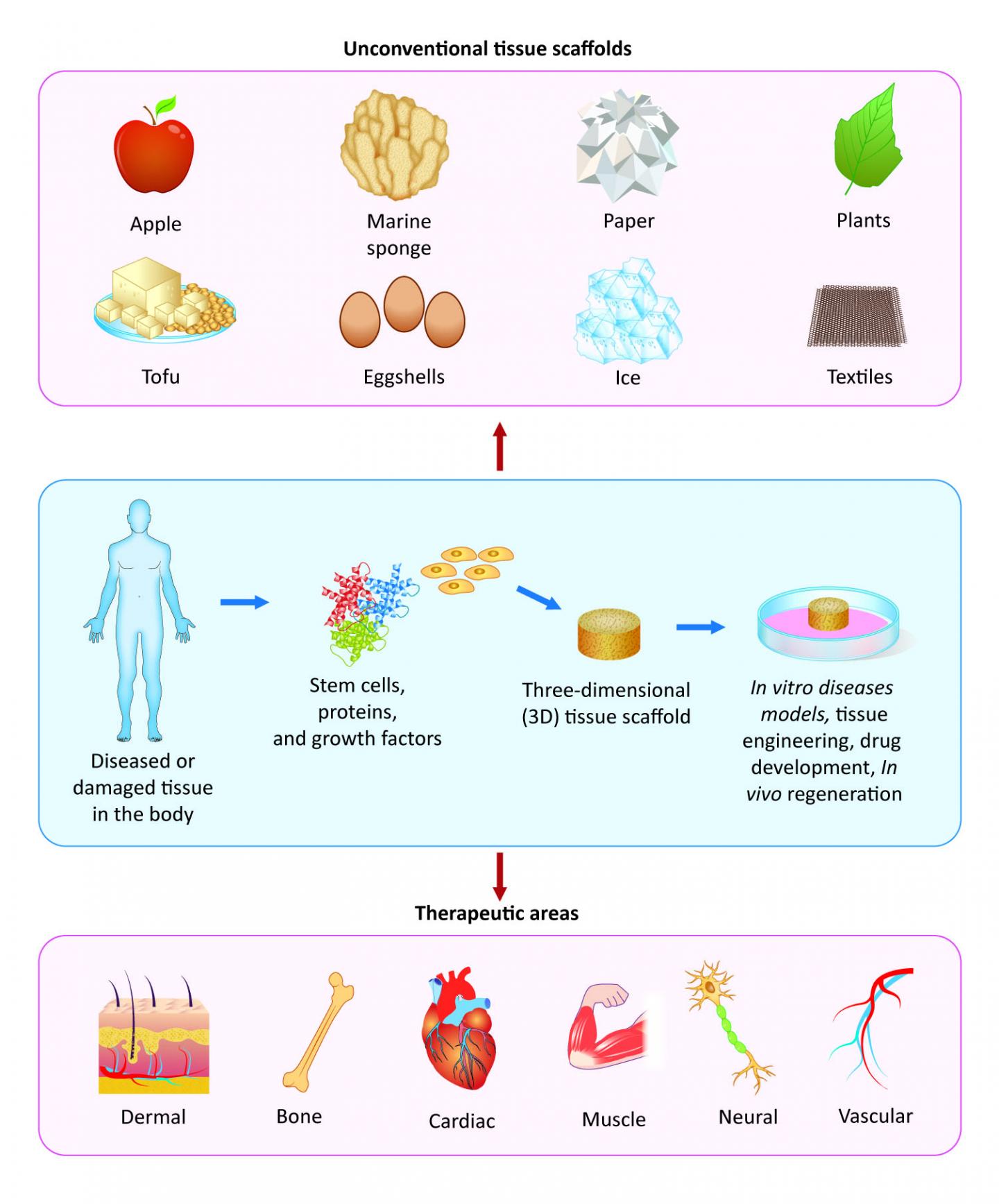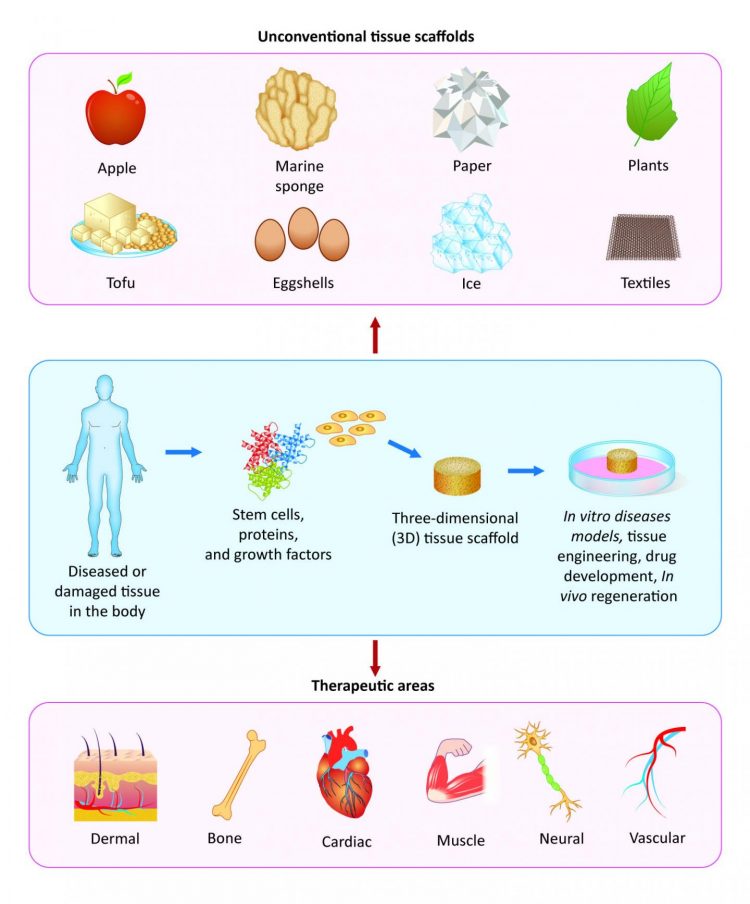
Credit: Nguyen and Camci-Unal/Trends in Biotechnology
As the global demand for tissue and organ transplants significantly outstrips supply, tissue engineering might provide a potential solution. But one of the significant challenges in tissue engineering is growing tissue in 3D, and the scaffolds used to position cells to develop tissue-specific functions are often challenging or prohibitively expensive to develop.
But in a review publishing September 18, 2019 in the journal Trends in Biotechnology, researchers at the University of Massachusetts Lowell explore recent efforts to use everyday materials like ice, paper, and spinach as tissue scaffolds. These unconventional materials, they argue, are more functional, more sustainable, and less expensive, as well as being available around the globe and applicable to many areas of biomedical research.
“Some of the recent tissue engineering techniques might be quite expensive, and some of them might require long and tedious optimization procedures to generate those three-dimensional scaffolds,” says corresponding author Gulden Camci-Unal. “We’re actually turning to nature and trying to see what exists and how can we utilize them for tissue regeneration.”
The scaffolds used in tissue engineering help position cells in a particular pattern, which in turn allows them to become functional in a tissue-specific manner. However, finding the perfect scaffold that is porous and biocompatible with mechanical strength is not easy. For that reason, scientists are now borrowing ready-made natural materials for a cost-efficient and sustainable approach.
“We’re essentially trying to simplify the process and trying to use readily available materials that can fit in the tissue during the application,” says Camci-Unal.
For example, a research team at Worcester Polytechnic Institute is now hacking into different plants’ unique vein systems, such as spinach. Spinach’s dense network of veins resembles the vasculature network of the human heart. By washing out the plant cells and leaving the plant wall matrix behind, the researchers can grow cardiac tissue on spinach skeletons.
Other researchers have explored a variety of other materials. Tofu is being utilized as a protein-rich scaffold to help wound healing through the promotion of cell adhesion. Incorporating calcium-rich eggshells to reinforce scaffolding materials can boost bone healing and nerve tissue regeneration. Some studies have drawn inspiration from origami to construct 3D paper scaffolds to grow bone tissue.
“People have been using paper for so many different applications for thousands of years,” says Camci-Unal. “But it wasn’t until 10 years ago that we started using them as tissue-engineering scaffolds for cell culture platforms. I think sometimes simple things are just overlooked.”
Scientists’ recent ventures into unconventional biomaterials show promising results but also need further investigation in vivo. While these biomaterials improve the functionality, scalability, and sustainability of current tissue engineering and potentially provide a novel approach to serve a broad spectrum of diseases, there is still more work that needs to be done.
Before clinical translation is possible, Camci-Unal says, standard protocols, biomaterial efficacy, and patient safety need to be established. This is particularly true because the field often overlooks and understudies many of these biomaterials. “We’re not familiar to some of the materials because it hasn’t been studied extensively yet,” she says. “We’re not aware of what the disadvantages may be, or there are other great advantages that we’re not aware of yet.”
One other benefit of these unconventional and naturally derived materials is that they can simplify tissue-engineering processes and lower the cost of study and environmental impacts, making this kind of research more globally accessible. “We want to make science available to anybody in the world, not just to highly equipped and highly resourced facilities,” says Camci-Unal. “We’re trying to develop biomaterials for all.”
###
This work was supported by the University of Massachusetts Lowell start-up funds and the Urban Massachusetts Alliance for Minority Participation (UMLSAMP) program.
Trends in Biotechnology, Nguyen and Camci-Unal: “Unconventional Tissue Engineering Materials in Disguise” https://www.cell.com/trends/biotechnology/S0167-7799(19)30188-X
Trends in Biotechnology (@TrendsinBiotech), published by Cell Press, is a monthly review journal of applied biosciences. It addresses what is new, significant, and practicable in the integrated use of many biological technologies–from molecular genetics to biochemical engineering. Visit: http://www.
Media Contact
Carly Britton
[email protected]
Related Journal Article
http://dx.





